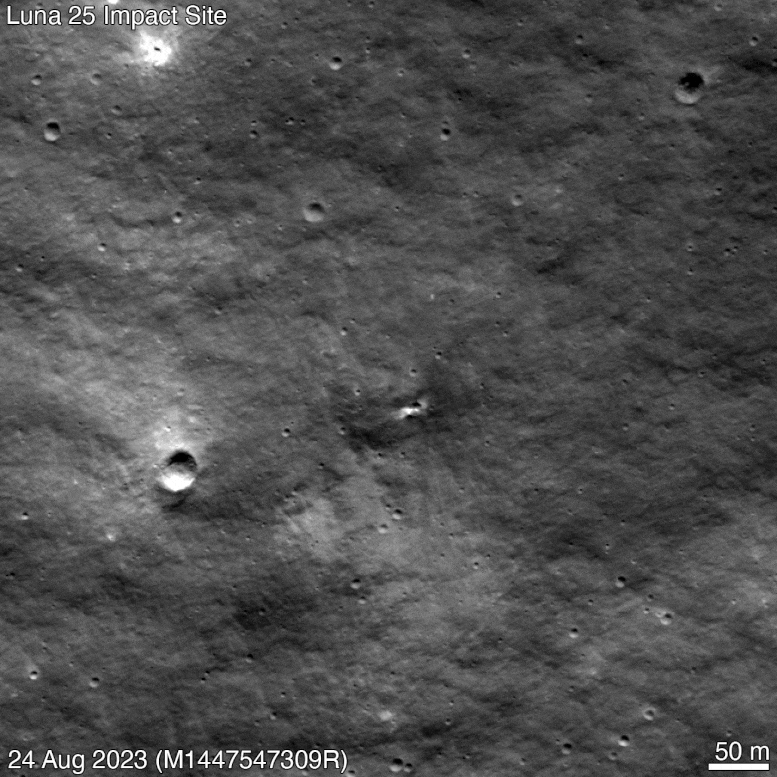
This GIF alternates between LRO views from June 27, 2020, and August 24, 2023 – before and after the appearance of a new impact crater likely from Russia’s Luna 25 mission. Credit: NASA’s Goddard Space Flight Center/Arizona State University
NASA’s LRO imaged a new Moon crater, likely the impact site of Russia’s Luna 25 mission, which deviated from its intended landing point due to a descent anomaly.
NASA’s LRO – the Lunar Reconnaissance Orbiter – spacecraft imaged a new crater on the Moon’s surface that is likely the impact site of Russia’s Luna 25 mission.
During its descent, Luna 25 experienced an anomaly that caused it to impact the surface of the Moon on August 19.
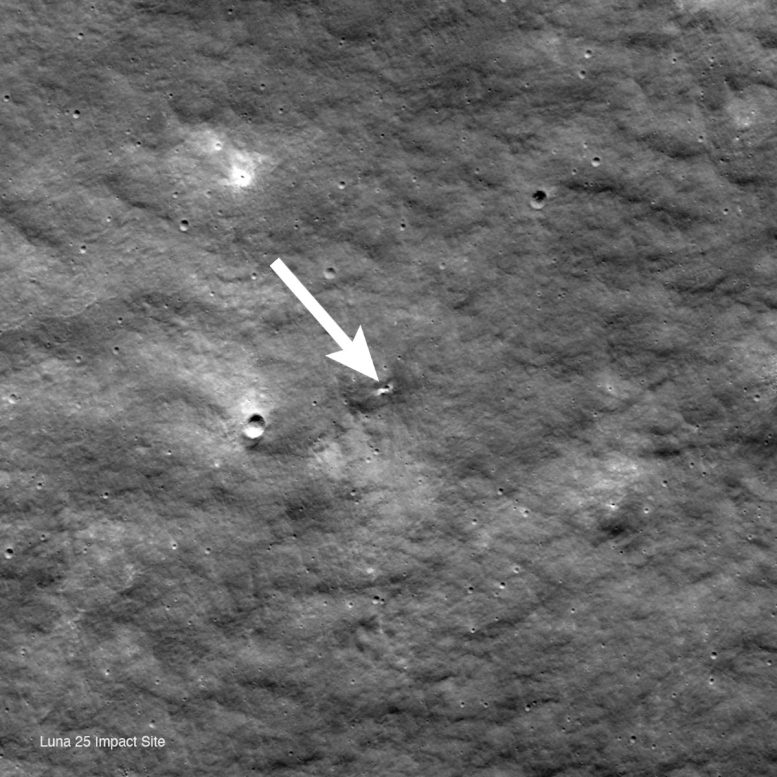
During the descent to the surface, the Russian spacecraft Luna 25 experienced an anomaly that caused it to impact into the southwest rim of Pontécoulant G crater on August 19, 2023, at 7:58 a.m. EDT (11:58 a.m. UTC). This image is 1,100 meters wide, and lunar north is up. (LROC NAC frame No. M1447547309R). Credit: NASA’s Goddard Space Flight Center/Arizona State University
Roscosmos, Russia’s space agency, published an estimate of the impact point on August 21. The LROC (short for LRO Camera) team and the LRO Mission Operations team were able to design and send commands to the LRO spacecraft on August 22 to capture images of the site. The sequence began on August 24 at 2:15 p.m. EDT (18:15 UTC) and was completed about four hours later, at 6:12 p.m. EDT (22:12 UTC). The LROC team compared images taken prior to the impact time and the sequence taken after and found a small new crater.
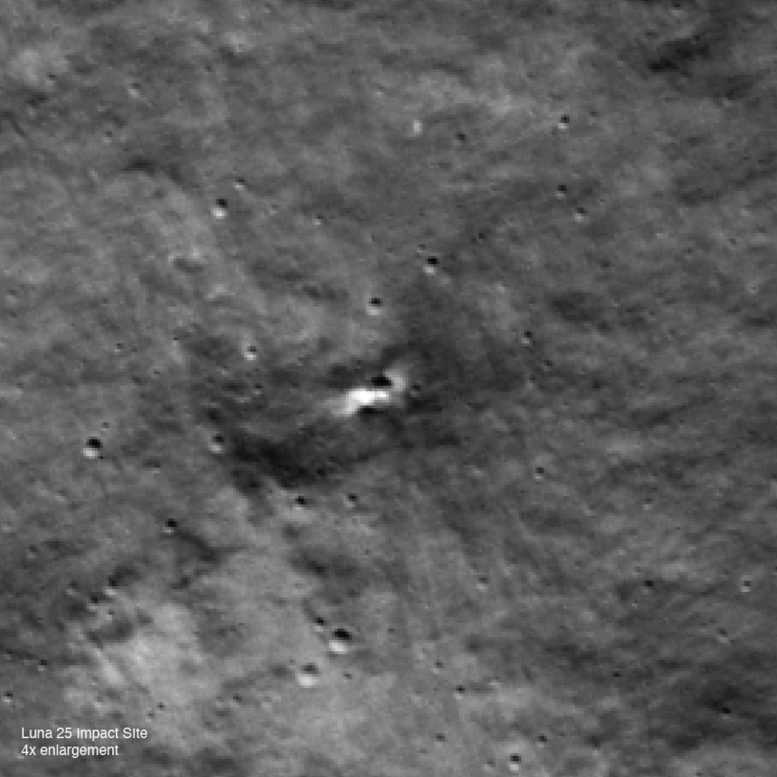
LROC NAC image enlarged four times centered on the likely Luna 25 crater. Image width is 275 meters; north is up. (Frame No. M1447547309R). Credit: NASA’s Goddard Space Flight Center/Arizona State University
LRO’s most recent “before” image of the area was captured in June 2022 (frame No. M1410024427R); thus, the crater formed sometime after that date. Since this new crater is close to the Luna 25 estimated impact point, the LRO team concludes it is likely to be from that mission, rather than a natural impactor.
The new crater is about 10 meters in diameter and is located at 57.865 degrees south latitude and 61.360 degrees east longitude at an elevation of about minus 360 meters. The impact point was on the steep (greater than 20-degree grade) inner rim of Pontécoulant G crater, about 400 kilometers short of Luna 25’s intended landing point at 69.545 degrees south, 43.544 degrees east.
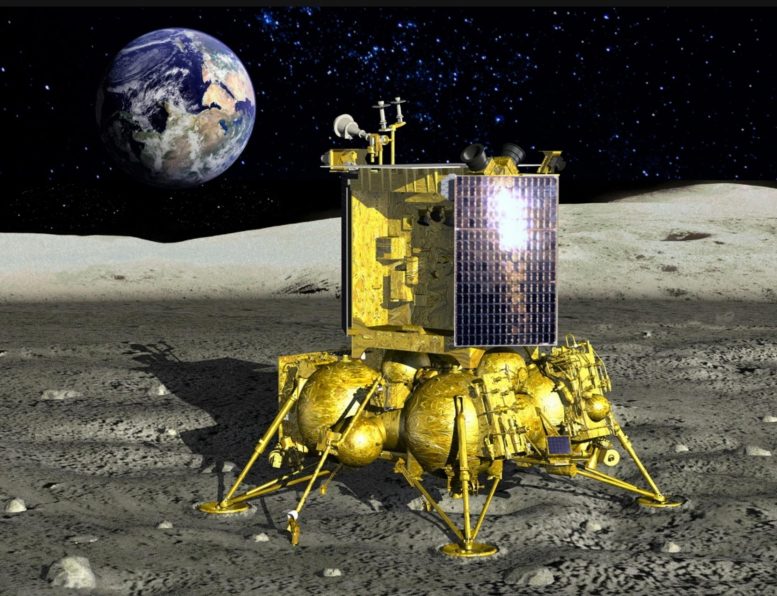
Illustration of Russian lunar lander Luna 25. Credit: N.P.O. Lavochkin (www.laspace.ru), all rights reserved
Luna 25, also designated the Luna-Glob-Lander, is a Russian lunar lander mission that launched on August 10, 2023. It was targeted to the south polar region of the Moon. There are two primary scientific objectives of the mission: to study composition of the polar regolith, and to study the plasma and dust components of the lunar polar exosphere. Communications were lost on August 19 and the lander reportedly crashed on the surface.
Luna 25 launched on August 10, 2023, at 23:10 UTC (7:10 pm EDT, 2:10 a.m. August 11 Moscow Time) from Vostochny Cosmodrome. Launch was on a Soyuz-2 Fregat into Earth orbit. It then fired the Fregat upper stage again to go into a lunar transfer orbit. On August 16 at 08:57 UT it reached the Moon and fired its engines to enter lunar orbit. On August 19 at 11:10 UT it fired its engines to go into its pre-landing orbit, but at 11:57 UT communications were lost. It reportedly crashed on the lunar surface, a crater believed to be the crash site has been identified at 57.865 degrees south latitude, 61.360 degrees east longitude on the inner rim of Pontécoulant G crater.
NASA’s Lunar Reconnaissance Orbiter (LRO) is a robotic spacecraft that orbits the Moon. Launched on June 18, 2009, the LRO’s primary objective is to map the lunar surface in high detail and to provide a comprehensive set of data that can aid in planning future lunar missions. Here are some key points about the LRO:
- Mapping and Surface Analysis: The LRO has been pivotal in creating the most detailed maps of the Moon’s surface to date. It has identified safe landing sites, located potential resources on the Moon, and analyzed the lunar radiation environment.
- Instruments: The LRO carries a suite of instruments, each designed for specific tasks. These include the Lunar Reconnaissance Orbiter Camera (LROC) to capture high-resolution images of the lunar surface, the Lunar Orbiter Laser Altimeter (LOLA) to map the Moon’s topography, and other instruments for thermal mapping, radiation measurement, and more.
- Lunar Water and Ice: Among its many discoveries, LRO has provided data suggesting the presence of water ice at the Moon’s poles, especially in permanently shadowed regions. This has implications for future lunar exploration and potential in-situ resource utilization.
- Mission Evolution: While the LRO’s primary mission was expected to last about one year after its launch, its success led to multiple mission extensions. This has allowed it to continue providing valuable data for over a decade.
- Support for Future Missions: By identifying potential landing sites and hazards, LRO data has been crucial for planning future manned and unmanned missions to the Moon, including NASA’s Artemis program aimed at returning humans to the Moon.
In summary, the LRO has played a critical role in enhancing our understanding of the Moon and preparing for future lunar exploration endeavors.

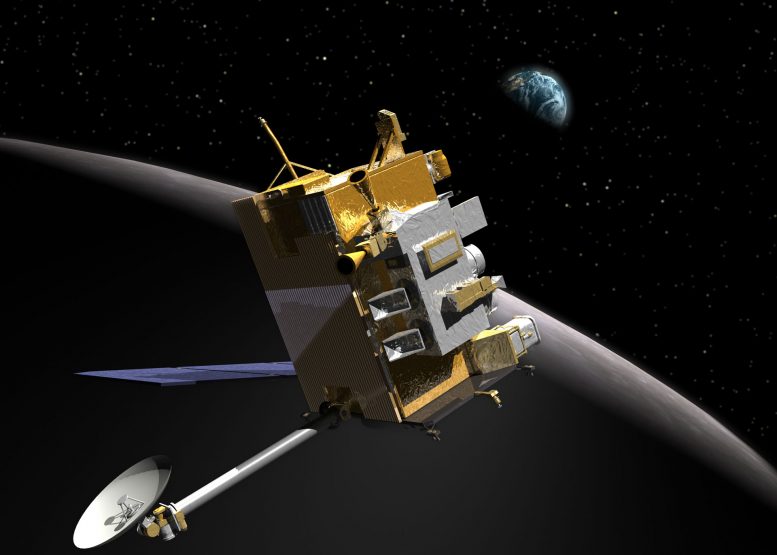

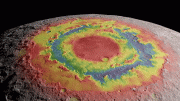
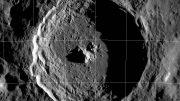
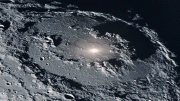
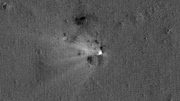
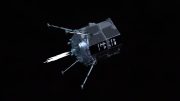


Be the first to comment on "Impact Crater From Russia’s Luna 25 Crash Spied by NASA’s Lunar Orbiter"